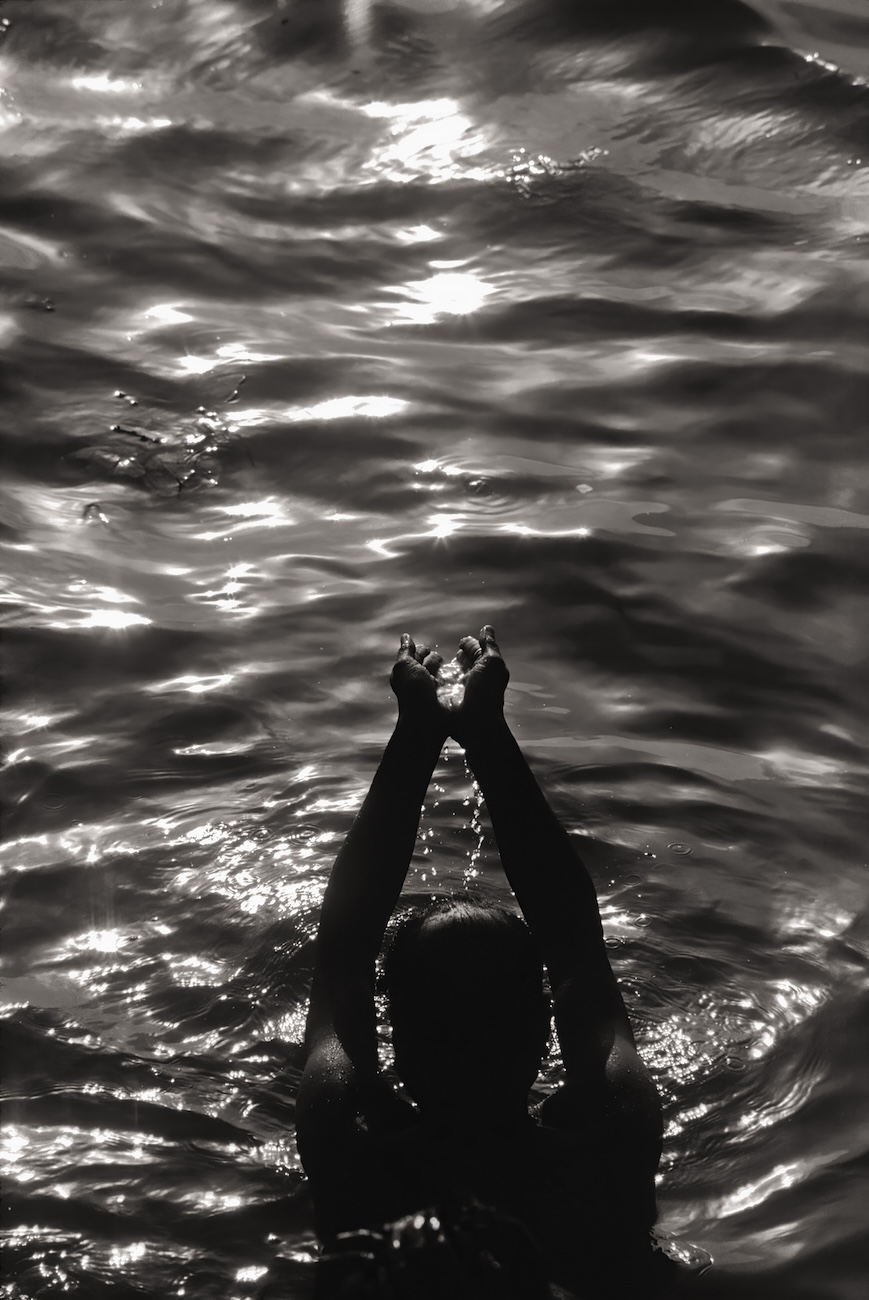
Without water, there is no life. The statement is as straightforward as the relationship between this vital element and people is complex. Renowned photojournalist Ian Berry has been dealing intensely with the subject of water for the past decades. “Water tells a tale as it goes” is a Japanese saying, which Kathie Webber – journalist and Berry’s wife – uses as the opening words for her accompanying text, adopting this Zen-like wisdom to point out the subtleties of the nature of water. The essential hallmarks of the photographer’s visual language are his intense emotionality and his direct testimony. Berry’s images convey the religious, social, societal and political interweaving between the element and its consumers around the world.
During the course of his work, it is not just the global perspective concerning water that has changed: the photographer’s understanding of this vital resource has also become more complex. In this way, humanity’s dependence on water – which is becoming an increasingly rare and precious commodity in many parts of the world – is revealed. Above all, the motifs underline the disastrous relationship that has developed in recent decades, and the devastating consequences of water’s pollution, scarcity and waste: drought and the lack of clean water, combined with catastrophic excesses during periods of flooding, have left their toll. The emotional black and white pictures are far more than a simple documentation of the state of the world: Water is an urgent reminder and a poignant résumé for the photographer, who will soon be turning 90.

Dawn finds people waking, washing and preparing for the day under the famed Howrah bridge over the River Hooghly. Kolkata, West Bengal 2009
Published last year, this book appears to be a great success. How do you see this work today, from a certain distance?
In retrospect, one always feels sad that important images or situations have to be omitted.
The book seems like a kind of résumé of your work. Can you tell us how it came about?
As you know, most photojournalists have one or two long-term projects that they try to add to, whilst working on other assignments. I started with the idea of combining water with its involvement in religion, having already taken photographs in South Africa and Baku. I was driving back from India to Europe, and added Benares and the Ganges to my collection.
When did you realize that Water was becoming a lifetime project?
It was not until I went to work on the Three Gorges Dam in China that I realised that water itself was the main social issue – in that case, with the forced displacement of over a million people. Then followed work exclusively on water and the environment, with trips down the Yangtse, Mekong, Nile and Mississippi, etc. Then I concentrated on Bangladesh, India and Central America; followed by Alaska and Greenland, to include the obvious melting ice situation.

Kids queue, hoping that they can fill their jerrycans with water in the refugee camp for displaced persons on the Congo. Burundi, Rwanda border, Kibangiro, Rwanda 2003
Did you decide on the sequence and selection together with your wife, who contributed the excellently insightful text?
In recent years, my wife Kathie, who is a journalist, frequently accompanied me and was a great help in trying to be more realistic concerning the amount we could actually cover. We ended up with over 3,000 images and, as always, one wants to concentrate on the best image shapes, losing site of the core situations. The book design was done by Stuart Smith at Gost Publishing, and the outcome is the result of inevitable wars between designer and photographer. However, I had confidence in Stu, who had designed my second book on South Africa, and is a master of compromise.
How do you see the relationship between the shots of landscapes and people in the photo book?
I’ve always been a people photographer, interested in social conditions, rather than a landscape guy who sometimes – as with salt lakes in China or glaciers in Alaska and New Zealand – has to include point pictures.
You’ve always relied on the quality of the Leica M for your work, haven’t you?
I’ve used Leicas from the word go in my career. I went to Wetzlar (or maybe Solms, can’t remember) and a great guy there at the time, Bob Schwalberg, had an M3 converted to an MP for me; and I also acquired a couple of M2s (those were the days!). Then followed an M4P, a couple of R reflexes, an M6 (I still have 3), M7, M8, M8.2 and an M9P.
Thank you very much for the interview and Happy Birthday!
Thanks for the reminder! Had forgotten that I have a 90th birthday coming up, as I’m still busy shooting.
Ian Berry was born in Lancashire, England, on April 4, 1934. He moved to South Africa in 1952, where he worked for the Daily Mail in Johannesburg, and then for Drum magazine, after 1959. In 1962, Henri Cartier-Bresson invited him to join the Magnum Agency, and he became a full member in 1967. In 1964, he started living in London and working as a photographer for The Observer Magazine. Since then, his assignments have taken him all over the world: he documented the Soviet invasion of Czechoslovakia; conflicts in Israel, Ireland, Vietnam and the Congo; starvation in Ethiopia; and the consequences of Apartheid in South Africa. Berry has published numerous books, including The English, London 1978, and Living Apart: South Africa under Apartheid, London 1996. He is the recipient of many awards. He lives in Salisbury, southern England. Find out more about his photography on his website.
IAN BERRY: WATER
With a text by Kathie Webber and comprehensive index.
180 pages, 93 black and white pictures
English, 21.5 x 30.7 cm, Gost
Leica M
The Leica. Yesterday. Today. Tomorrow.


















